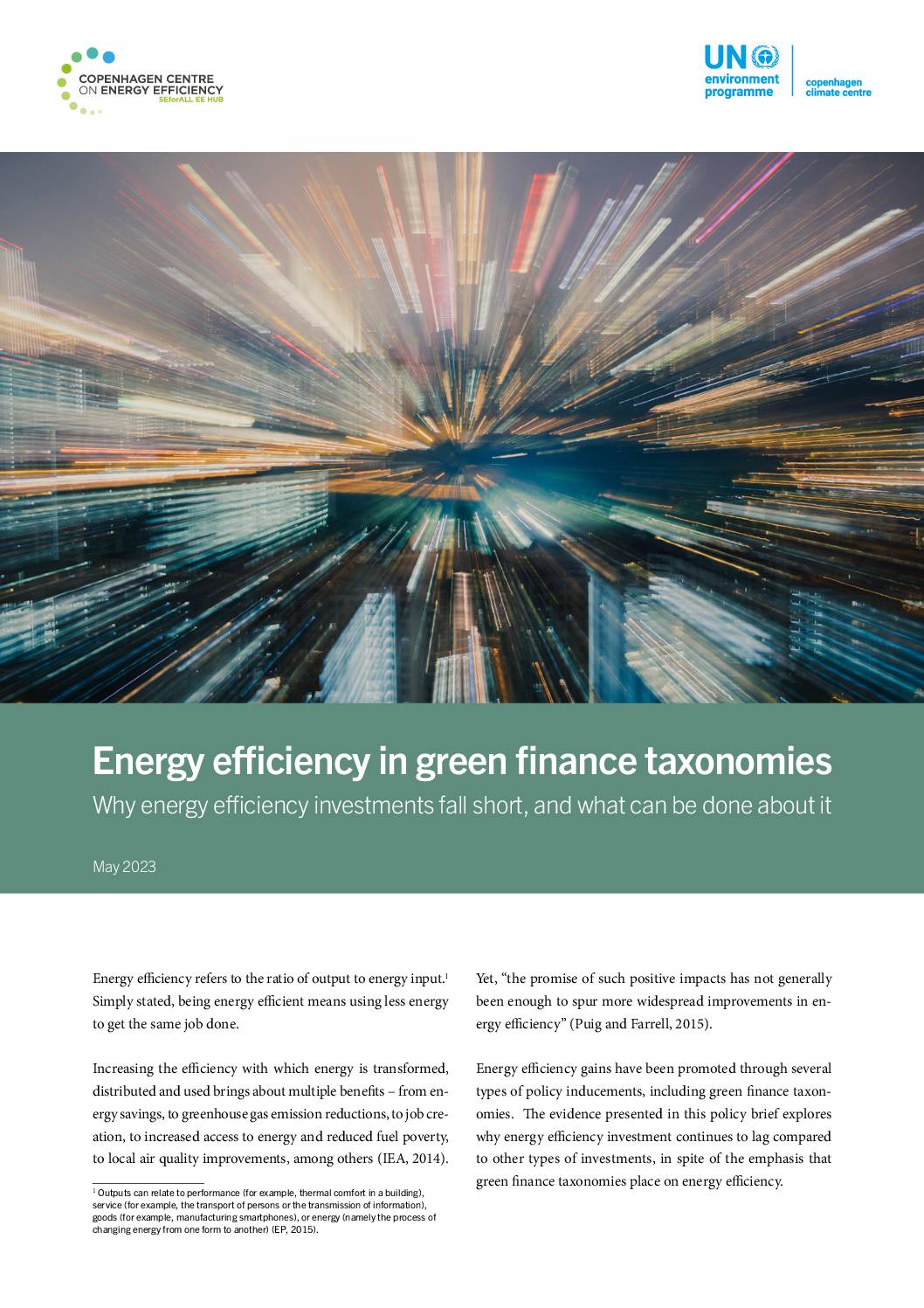Energy efficiency refers to the ratio of output to energy input. Simply stated, being energy efficient means using less energy to get the same job done. Increasing the efficiency with which energy is transformed, distributed and used brings about multiple benefits – from energy savings, to greenhouse gas emission reductions, to job creation, to increased access to energy and reduced fuel poverty, to local air quality improvements, among others (IEA, 2014). Yet, the promise of such positive impacts has not generally been enough to spur more widespread improvements in energy efficiency. Energy efficiency gains have been promoted through several types of policy inducements, including green finance taxonomies. The evidence presented in this policy brief explores why energy efficiency investment continues to lag compared to other types of investments, in spite of the emphasis that green finance taxonomies place on energy efficiency.
Download sourceShare this

Sectors: Cross cutting, Finance
Country / Region: Global
Tags: air quality, climate change, emissions, energy, energy efficiency, energy savings, GHG emission reduction, greenhouse gas emissions, International Energy Agency, specific financing mechanisms, sustainabilityIn 1 user collection: C2E2 Publications
Knowledge Object: Publication / Report
Published by: Copenhagen Centre on Energy Efficiency
Publishing year: 2023
Author: Daniel Puig, Xianli Zhu
